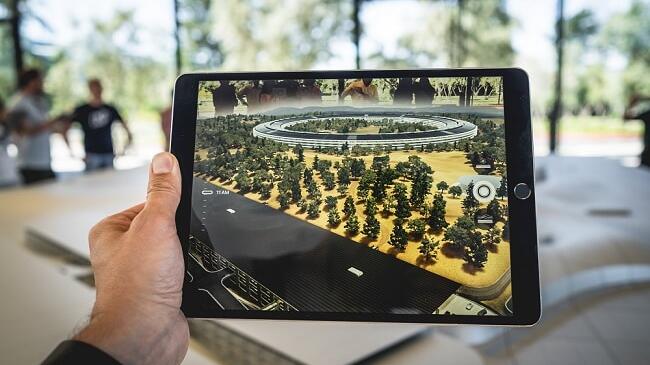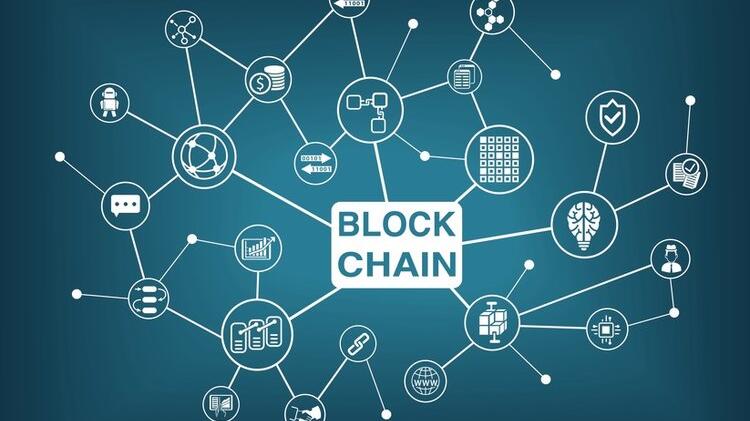 Digitalisation
Digitalisation#03 Augmented Reality (AR) - From visualized data to x-applications for the digital energy industry.
Summary
Omnia360: Augmented reality refers to interaction between digital and analog worlds. This involves computer-based applications, hardware and software. Through the camera, data from the environment can be recorded and enriched with digital data. The visual representation is done by software and users can display this data in real time. Mixed reality (MR) is located between augmented reality and virtual reality. MR is more than a generic term for AR and AR. It can be understood as a new kind of hyperreality. In the future, AR and XR solutions will become a central component of the digital energy transition. The energy industry can benefit from all of this. AR applications for the energy industry are possible and partly in use. These have been elaborated by the online magazine energynet.de in its series of articles on augmented reality. These have been published in its articles on this article on the energynetde.de.com.com/says the article.
Open full article
#03 Augmented Reality (AR) - From visualized data to x-applications for the digital energy industry.
Augmented reality can do much more than make the invisible visible. It connects our analog and digital data worlds. In doing so, it creates transitions that did not exist before. 2D data can be linked with 3D data and visualized. On this basis, augmented reality - AR for short - creates new tasks and applications for companies in general and companies in the energy industry. But how can the technology be used in concrete terms? This article addresses this question and provides answers.
What is Augmented Reality?
In general, it can be understood as follows: Augmented reality refers to the interaction between the digital and analog worlds. This involves computer-based applications. Hardware and software are used. This links data from the real world with data from the digital world.
Omnia360 goes into more detail with the following definition:
Augmented Reality is a medium, which consists of a virtual extension of reality by three-dimensional registered and in real time interactive elements. These are to be presented to the user as if they were part of the real world through appropriate systems that address one or more senses." (3) Omnia360 (3)
Internet-enabled smartphones, tablets, or other gadgets equipped with a camera provide appropriate hardware. Through the camera, data from the environment can be recorded and enriched with digital data. The visual representation is done by software. Users can display this data from the virtual world in real time. To do this, they need the appropriate technical equipment, such as a camera, tracking devices and software.
AR does not completely isolate users from their external environment. Additional information can be displayed via glasses or smartphone. This can be helpful in accomplishing tasks, which is discussed in more detail in the section below.
What distinguishes augmented from virtual and mixed reality?
Unlike virtual reality (VR), users of this technology are not immersed in a virtual world. Rather, their own world is supplemented or expanded by digital elements. This provides users with additional information, whereas in the virtual world an artificial world is created based on computer-aided data. Users enter this world with the help of VR glasses. The virtual world can appear immersive and thus deceptively real for users.
Mixed reality (MR) is located between augmented reality and virtual reality. MR is much more than a generic term for AR and AR. It can be understood as a new kind of hyperreality. This means that both augmented and virtual worlds can be combined in MR. For example, by embedding the worlds of film and photo into the virtual one or by integrating or holoporting virtual beings into the real world.
Via MR glasses, such as those offered by nreal or Microsoft HoloLens, MR can be used as a business solution in everyday business. For example, experts from around the world can be called in to remote job sites. But there are many more applications for "XR" - the term summarizes Mixed, Virtual and Augmented Reality. We present them. [2]
How can the energy industry use augmented reality?
Augmented reality has the potential to change the energy industry for good. For example, by redefining existing tasks and structuring task fields differently [1].
Reasons are:
- The technology represents a connector to other digital technologies.
- It creates further preconditions for interactive, remote working and that across all sectors.
- In the near future, new AR applications will result from AR technologies.
AR as a component of a digital energy revolution
The energy industry can benefit from all of this. In perspective, AR and XR solutions will become a central component of the digital energy transition. Why? Every smartphone that comes onto the market today is in principle AR-compatible. This opens up a wide field for applications and business development.
For example, employees of energy companies often need specific additional information during external activities. Today, this information is provided by data management and goeinformation systems. However, obtaining information is often cumbersome and time-consuming. It often requires the involvement of third parties for the required data. In the future, information procurement can be shortened by using AR.
AR applications in the energy industry
Via augmented reality, images can be projected into the real environment. Such holograms provide appropriate directions. Instructions can be displayed or colleagues can be added remotely in real time. These support the operation. While glasses are often used as tools for this, data output via the screen of a tablet or smartphone is also possible.
With so-called head-up displays, data can be projected onto surfaces. Such projections are useful when used in vehicles. Augmented reality, for example, can be used to display data such as construction drawings, animations, audios or videos in real time. They allow direct interaction.
The following possible applications of AR for the energy industry are possible and some are in use. These have been elaborated by the online magazine energynet.de in its series of articles on augmented reality [5].
Overview of areas of application for AR in the energy industry
- Events, marketing and sales
- Communication, teamwork and training
- Planning
- Service
- Maintenance and repair/ Smart maintenance
Three use cases
The following three use cases show possible applications of XR in the energy industry.
1. AR for measuring and visualizing real environments
frox IT factory - making the invisible visible through XR/AR
For example, frox IT Fabrik, based in Dortmund and Munich, uses FX Reality when measuring house connections. But their AR solution can do more. It makes previously invisible things such as old pipe systems, ducts and lines visible.
With the help of a smartphone, parcels of land and boundaries can be displayed. Neighborhoods can be marked out and planning statuses can be communicated transparently through their FX Reality app. For their AR applications frox IT Fabrik cooperates with different partners.
2. AR for training and education purposes.
wondder - Initiating transformations through VR.
Not exclusive to the energy industry, wondder's VR trainings are from VaRc GmbH. They help companies evolve through VR. Although the orientation of the trainings are less technical. Rather, the trainings are about diversity & inclusion. Their goal is to unlock human potential. They do this by enabling employees and management to take on new roles and tasks.
3. AR for trade fairs and events
WeAre - Use all-in-one communication solution without IT expertise.
WeAre creates a new basis for communication with its XR solutions. They enabled virtual meetings via their virtual reality conferencing system. It allows customers, team colleagues and suppliers to exchange complex 3D CAD data from anywhere in the world. In this way, development processes can be designed effectively. With customers, virtual inspections and incorporation of changes to planned products or machines are possible.
AR market and development status
AR technology is neither groundbreaking nor new. IT companies and labs developed the groundwork for it years ago. Microsoft, for example, launched its HoloLens in 2016. So far, XR and AR have found favor primarily in the computer games and entertainment industries. Here, augmented reality has gained worldwide notoriety, particularly through the computer game Pókemon Go.
Since more computing power, storage capacity, better graphics processing and high-resolution displays have become available, the appeal of using AR in companies has also increased. Because overcoming these limitations reveals many use cases. Although a study by the Deloitte consulting firm from 2019 still describes the use of augmented reality in the energy industry as "tentative".
AR gives room for startups
Predictions are that AR will become widespread in the business world. It's not without reason that the market is growing. AR offers numerous advantages for cost-efficient working and coping with tasks and orders. At the same time, AR is not a highly complicated technology. This in turn makes it easier to work with and simplifies the implementation of AR applications. Accordingly, Deloitte estimates that total global AR revenue in the energy sector could be around €16 billion in 2022. [4]
As is usually the case with new technologies and innovations, the market is reshaping itself around AR applications.
This appearance includes company start-ups as well as the development of new business areas established by companies already on the market. Some companies have already recognized the potential of AR. They are waiting in the wings with their AR applications and solutions - ready to conquer the emerging market.
Conclusion
XR technology in general and AR in particular will gradually find its way into our private as well as professional everyday lives. AR applications are increasingly interesting for industry and business. They generate added value and can be combined well with other digital technologies.
Companies that have experience implementing XR applications and projects can share their experiences.
Would you like to present your projects on Technewable.com? Then get in touch with us!
Sources and recommended reading
If you want to dive further into the topic, you can find reading suggestions under the links.
- [1] Telekom - This is Augmented Reality | Deutsche Telekom (Website)
- [2] GAL- Application areas of Augmented Reality | GAL Digital (gal-digital.de) (Blog)
- [3] Omnia360 - What is Augmented Reality? Definition, examples & overview of AR (omnia360.de) (Blog)
- [4] Deloitte - Augmented Reality in the energy industry | Deloitte Germany (Website) (Whitepaper)
- [5] Energynet - https://www.energynet.de/2017/06/28/energiewirtschaft-augmented-reality/ (Magazine)



